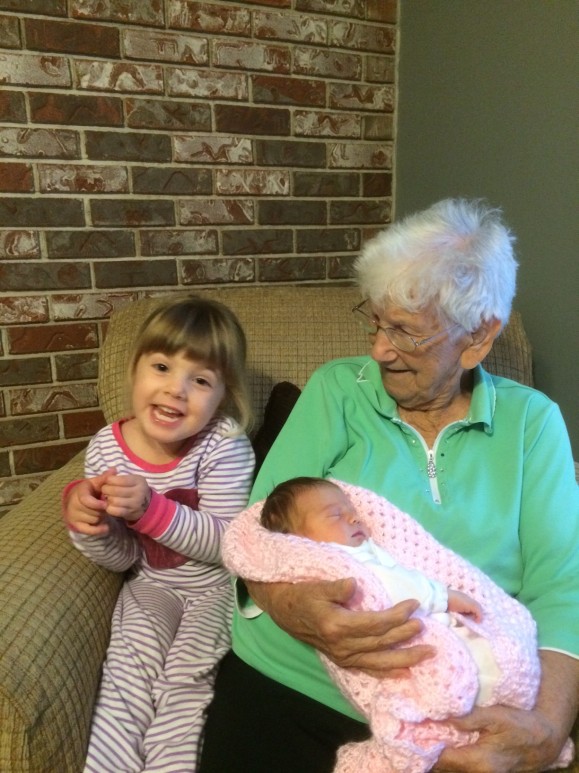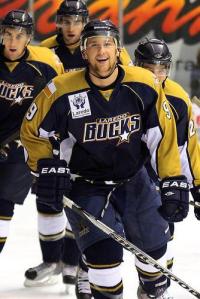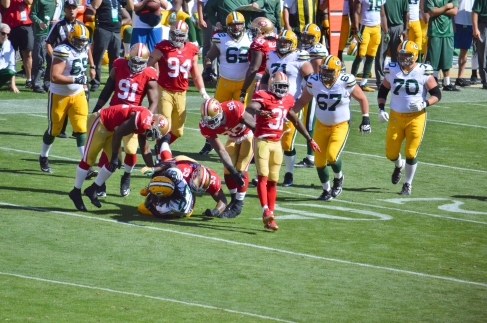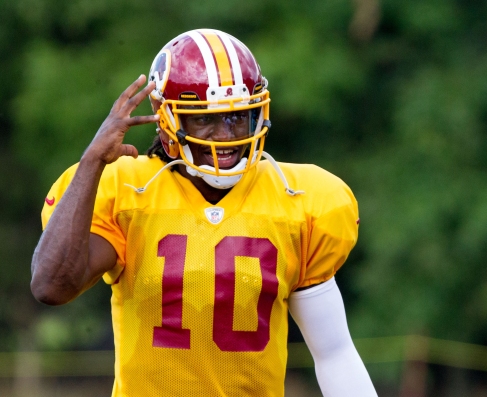
Andrew McGilligan
One Volek in Time
They don’t exist.
The winning team in perhaps the greatest baseball game ever played in the province has been reduced to a footnote, a minor part of the story.
Their relegation wasn’t out of malice or pettiness. Everyone agrees they won. No controversy or disputed calls. They simply just faded. Each year, the ink of their accomplishment gets a bit fainter like the stats on the back of an old baseball card.
The Cuban national team that played a group of Fredericton All-Stars on a summer night in 1976 might have been the victors, but history has made them the ghosts of Baseball Hill.
While the game in Fredericton is fondly remembered, it was one of a seven-game tour by the Cuban national team of New Brunswick and Nova Scotia organized by the federal government and administered by Baseball NB.
Why the team was playing in July, more than 1,700 kilometres from home is a mystery unto itself, said Cuban baseball historian Peter Bjarkman.
The Cuban squad would typically play international games as a warm up for the Amateur World Series (AWS). The 1976 AWS was being held in Cartagena, Colombia, from Dec. 3-19.
“What were they doing in Canada so far in advance of the Amateur Word Series?” Bjarkman said. “I’ve never seen anything about these [Maritime games].
“This was a period of time where there were guides that came out that detailed the team’s international play. However, for a period of time in the mid to late 70s, they weren’t published.”
Regardless of the reason for their summer sojourn, the team was in mid-season form. In the opening two games of the tour, the Cubans played in Glace Bay against a Nova Scotia squad. The Cubans were as good as advertised, posting wins of 27-3 and 33-2.
Up next was a game in Moncton and another high-scoring affair with the Cubans posting a 22-2 victory. Then it was on to Saint John and another lopsided win of 15-1.
This is where the eraser of history begins to creep in.
Any reporter will tell you, it’s the story that matters. A good one can echo throughout history, while a score is discarded with yesterday’s paper. This is what happened on Baseball Hill more than 30 years ago. The Fredericton team lost a 1-0 decision to the Cubans on July 19, 1976 on the strength of an all-time great pitching performance by local hurler Scott Harvey Jr.
The story has endured and grown in stature with each passing year, but rarely, if ever, does anyone wonder about the players on the winning squad.
FACING GIANTS
Those who wore the red Cuban jerseys at Royals Field in 1976 are worth remembering. The team included a dominant pitcher, a strikeout king, one of the era’s top sluggers and a man who would make history just a few years later.
All told, the team contained five MVPs of the National Series, the premier Cuban league, and one of the assistant coaches won the award twice.
The modern day equivalent of the squad that played on Baseball Hill on that July night in 1976 would feature names such as Miami Marlins’ ace Jose Fernandez, Cincinnati Reds’ closer Aroldis Chapman, Chicago White Sox slugger Jose Abreu and Los Angeles Dodgers outfielder Yasiel Puig.
The five men on the ’76 team who had won the National Series MVP award were first baseman Antonio Munoz, centerfielder Fernando Sanchez, outfielder Eulogio Osorio and pitchers Omar Carrero and Rogelio Garcia.
“Munoz, at that point in time, was one of the great home run hitters [in Cuba],” said Bjarkman. “Sanchez is still in the top three all-time in hits.
“Osorio was an all-star for a number of years and later won championships as a manager.”
Despite a roster chock full of all-stars and award winners, one player stood out from the rest.
The man on the mound for the Cuban squad –Carrero – was in the midst of a career-defining season. The Fredericton players suffered the same fate as many others who faced him – unable to score a run.
A WORLD-CLASS ARM
Best pitcher outside of Major League Baseball.
That’s a claim Carrero could make in 1976. In fact, his numbers stacked up well with just about any other pitcher on the planet.
He was named the National Series MVP in ’76 with a season for the ages. He won the pitching Triple Crown as he led the league in strikeouts (94), earned run average (0.46) and tied for the league lead in wins with eight.
Perhaps the statistic that best illustrated his dominance is he posted more shutouts – a league-leading five – than he allowed runs all season – four. In addition to his MVP trophy, he was also named the circuit’s top pitcher and led his team – the Ganaderos – to their only title.
The right-hander was not satisfied with simply dominating the Cuban league. He led the Cuban national squad to gold in the ’76 Amateur World Series in December.
Carrero was every bit as masterful on the international stage, posting a 4-0 record and a 0.61 ERA.
His Fredericton start was no different. He scattered four hits to go along with five strikeouts in eight and two-thirds innings.
Fredericton left-fielder Tom Reid said Carrero was a finesse pitcher.
“He wasn’t overpowering, but he had superb control and kept everyone off balance,” Reid said. “He had a curveball, slider and while his fastball was only in the high 80s, he just didn’t give us many good pitches to hit.”
With runners on first and second with two outs in the bottom of the ninth, Cuban head coach Francisco Escaurido decided Carerro had done all he could. However, Escaurido was not going to bring in just any reliever. Instead he brought in one of the greatest pitchers in Cuban history.
THE FINAL OUT
The members of the Fredericton all-stars knew the Cubans were going to be good, but few probably had a better understanding of the competition they faced than Reid.
Having represented Canada in the early 1970s in the Intercontinental Cup, he played against some of the top baseball nations in the world, including the United States, Japan and Puerto Rico. While those teams were great, the Cubans were considered a class above.
After the drubbings handed out to the other Maritime all-star squads at the hands of the Cubans, Reid and his teammates faced a daunting task.
“The mindset going into the game was to play the absolute best you can,” he said. “It’s really all you could do.”
Trailing Cuba 1-0 with two on and two outs in the bottom of the ninth, Reid stepped to the plate against Rogelio Garcia.
A right-handed power pitcher, Garcia was dominant in the mid-to-late 70s. He remains the career leader in strikeouts in Cuban history and in the top 10 in career shutouts, complete games, winning percentage, wins and innings pitched.
In the National Series, he led the league in strikeouts seven times, twice in ERA, twice in shutouts, twice in complete games and once in wins.
The first pitch from Garcia to Reid was a sign of things to come. It was a fastball at the letters, coming in around 95 miles per hour, same as the five that would come after it. Where Carerro dominated with superb control, Garcia was the opposite.
He threw fastballs and dared batters to try and catch up with one.
“I definitely wasn’t used to high 90s pitches,” Reid said. “I was a belt down hitter and he came in throwing 95 at the letters. I worked him to a 3-2 count, but not much more.”
Garcia did exactly what he was supposed to do, what he had staked his career on – striking guys out.
THE HIT
In his book Confessions of a Winning Poker Player, Jack King writes, “Few players recall big pots they have won, strange as it seems, but every player can remember with remarkable accuracy the outstanding tough beats of his career.”
Scott Harvey is no different.
Despite throwing a complete game, allowing just one run on six hits while striking out seven against a team that won six Amateur World Series in the 1970s, Harvey clearly remembers his one mistake.
“It was a curveball,” Harvey said. “It didn’t work out too well.”
With one out in the top of the second inning, he faced designated hitter Jose Cabrera. On a team filled with stars, Cabrera was not among them.
A nine-year veteran of the National Series, his numbers were solid, but not overly impressive. He was a career .272 hitter and averaged three homeruns and 22 RBI per season.
“Needless to say, he was not a major star,” Bjarkman said.
For the purposes of the game on Baseball Hill, he was an unlikely hero for the visitors.
If anyone had been poised to be the star for the Fredericton team, it was Harvey. While Cuba boasted some of the best players in the world, he had faced and played alongside some top Major League Baseball talent.
Harvey spent part of three seasons playing minor league baseball with teams in the Los Angeles Dodgers and St. Louis Cardinals organizations. As a member of the Dodgers’ rookie ball team in Ogden, Utah, he played alongside the 1974 National League MVP and 10-time all-star Steve Garvey as well as former all-star Bill Buckner and major league player and manager Bobby Valentine. With the Cardinals Class A team, he suited up with major league pitcher Bob Forsch.
In three seasons from 1967-68 and 1970, Harvey posted a .255 average with eight homeruns and 43 RBI in 106 games.
It’s why despite having played against the Cubans in the previous game in Saint John – a 15-1 loss – that Harvey was confident heading into the game.
“I had a feeling that if I pitched my game – I knew I had a good defence behind me – that we could win,” Harvey said. “I wasn’t worried about their pitching because we had good hitters. We went to the Nationals [Canadian Senior Baseball Championships] a lot and we always faced the best pitchers in the country.”
Despite the great performance of Harvey’s counterpart on the mound, Fredericton had a few chances to score. Centrefielder Bob English was thrown out at home plate in the eighth inning and catcher Dean Moore nearly hit a home run in the bottom of the ninth inning. Moore’s near miss prompted the Cuban coach to bring in Garcia to face Reid for the final out.
As for the Cabrera home run, it wasn’t a bad pitch, but rather a good piece of hitting.
“I had thrown mostly fastballs all night and some sliders,” he said. “There were a few curveballs and the one he hit; I threw it where I wanted it. He just hit it.”
HISTORY SAT ON THE BENCH
The game between the two teams had connections to some historic moments and some odd ones. The contest has links to the Mariel Freedom Flotilla, a sports gambling scandal, an assault of a fan with a bat in minor league baseball and the first Cuban to play in MLB since Fidel Castro’s became president.
Actually, all of those things are linked to one man – Barbaro Garbey.
No matter what Garbey did, it attracted attention. A star in the National Series, he won a batting title with the Industriales and played for the national team during the mid to late 70s.
Two years after watching the game from a dugout at Royals Field, Garbey’s world began to crumble.
Baseball will tolerate a lot of things, so long as you play at a high level. Off-field indiscretions are brushed aside – for the most part – to keep the talent on the field. However, whether it’s the Cuban league or MLB, gambling is not treated lightly. Garbey received the same sentence that befell baseball legend Pete Rose when he was caught in a gambling scam – an indefinite suspension from the game.
He was implicated in a run-shaving scam. While he denied throwing games, Garbey admitted he took money to keep games close. The suspension meant he would never suit up for a club in Cuba or with the national team. It was his ban from the game that prompted him to be part of history as he fled Cuba in 1980 as one of approximately 125,000 refugees during the Mariel Freedom Flotilla. Cuban President Fidel Castro lifted his temporary no-exit policy in 1980. Many of the deportees were deemed to be undesirable by the Castro. Some had been incarcerated while others were political dissidents.
While not part of either category, Garbey borrowed a friend’s immigration papers and tried to board one of the boats destined for the United States. Being a famous ballplayer did not help him conceal his identity and he was denied access three times. However, on his fourth try, he was allowed to board with just the clothes on his back. He left his wife and two daughters behind.
Garbey arrived in Key West, Florida, with 200 other passengers in May of 1980. He was then taken to a refugee camp at Fort Indiantown Gap in East Hanover, Pennsylvania.
It was in the camp where a scout for the Detroit Tigers, Orlando Pena, found him. He signed with the Tigers in June of 1980 and began to make his way through the minor leagues.
He progressed through the Tigers system and was enjoying a good year at the Triple-A level in 1983 when more trouble set in. He allegedly struck a heckling fan with a bat while playing Louisville and was suspended on June 28. Less than a month later, he was reinstated and fined $500.
He made the Tigers roster for the 1984 season and his major-league debut came in Detroit’s 8-1 win over the Minnesota Twins on April 3, 1984. It marked the first time a Cuban had played in the majors since Castro’s reign began. The Tigers went on to win the World Series that season with a roster that boasted the likes of Lou Whitaker, Alan Trammel, Kirk Gibson and Jack Morris.
He played one more year with the Tigers before being dealt to the Oakland A’s, but couldn’t crack the Athletics’ opening day roster in 1986. He continued his career in Mexico and Venezuela before getting another shot at the majors with the Texas Rangers in 1988. He suited up for 30 games with the Rangers, the last of his major league playing career. After kicking around the minors for a few more years, he retired and began coaching in the minors with the Tigers and Chicago Cubs organizations, among others.
For Cuban players, Garbey is regarded as a trailblazer. Major league pitcher Jose Contreras described him as hero in an interview with USA Today in 2005.
“Everyone knows who he is in Cuba,” Contreras said in 2005. “Everyone knows that he’s the first one.”
THE LEGACY
The Fredericton Royals are a perennial powerhouse in the New Brunswick junior and senior baseball leagues. Each season, those teams add new memories to the minds of players and fans who spend summer evenings at Royals Field on Baseball Hill.
Many can recall watching former major leaguers Matt Stairs, Rheal Cormier and Jason Dickson play on the local diamond and will no doubt tell the next generation of their exploits. However, the game played nearly 40 years ago still holds a special place in the annals of the city’s baseball history.
“It was, without a doubt, the best game I ever played in,” Harvey said. “The crowd, the intensity. I think it was the best game ever played at Royals Field.”
“I think for anyone who played in it or watched it, would rank it as one of the best,” Reid said.
On that July night in 1976, the players from a small city took on and nearly beat a mighty baseball nation. Through the years, that’s the story that has survived, but none of it would have been possible without the forgotten team of Cuban players – the ghosts of Baseball Hill.







